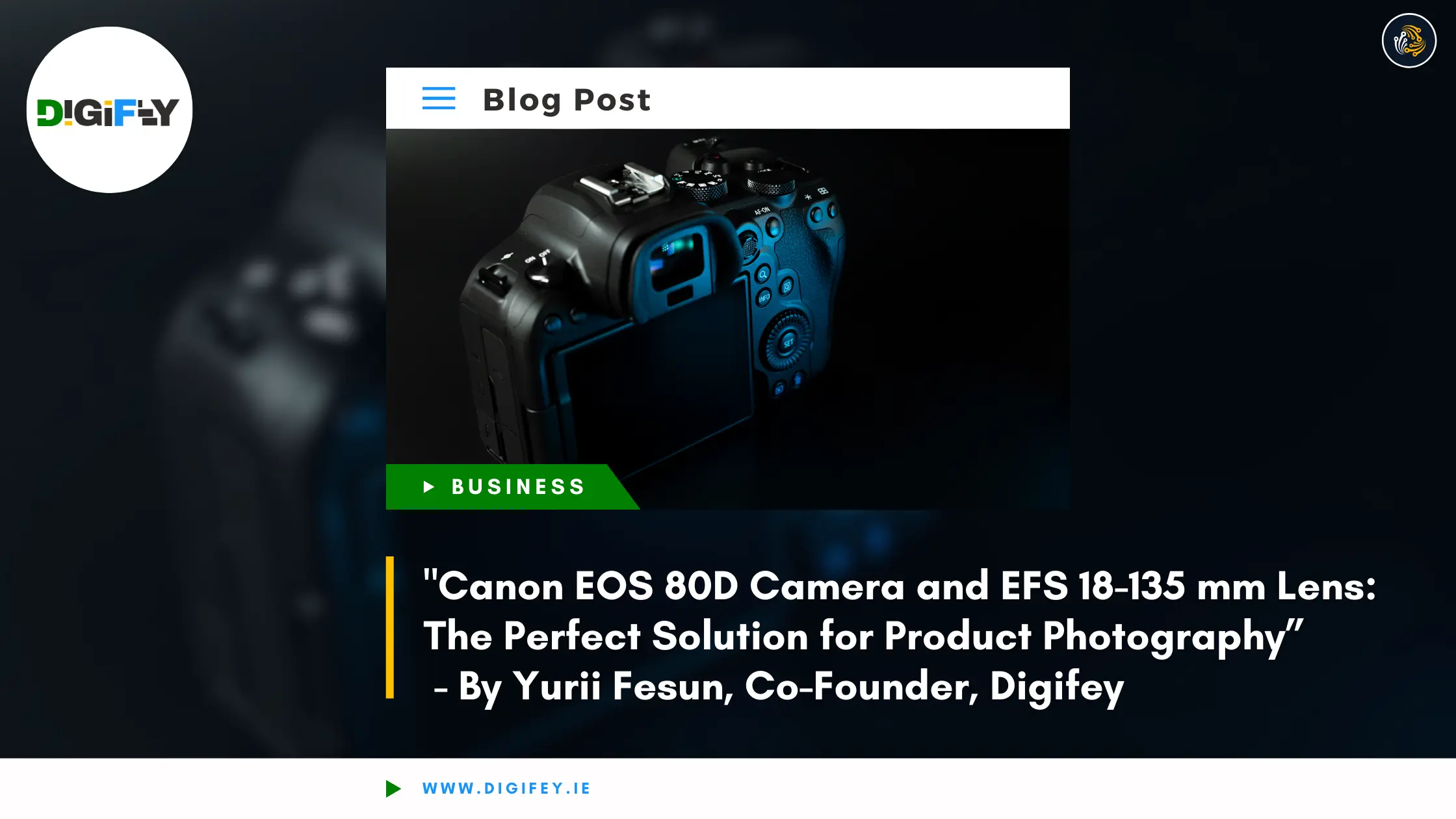In the world of product photography, choosing the right camera and lens is essential to create sharp, professional, and captivating images that grab attention. The Canon EOS 80D paired with the versatile EFS 18-135 mm lens is a top-tier combination that delivers outstanding results for both beginners and seasoned photographers. Here’s why this dynamic duo is the perfect solution for your product photography needs.
1. Canon EOS 80D: A Photographer’s Best Friend
The Canon EOS 80D is a DSLR camera designed with versatility and performance in mind. Its features cater to the demands of product photography, offering precision and creative flexibility.
Key Features:
- 24.2 MP APS-C Sensor: Captures high-resolution images with stunning detail, making it ideal for showcasing intricate product textures.
- Dual Pixel CMOS Autofocus: Ensures fast and accurate focus, even in challenging lighting conditions.
- ISO Range (100-16,000): Offers excellent performance in low-light settings, ensuring your products look their best in any environment.
- Built-In Wi-Fi and NFC: Enables wireless image transfer, streamlining your workflow for instant sharing or editing.
2. EFS 18-135 mm Lens: Versatility in One Package
The Canon EFS 18-135 mm lens is the perfect match for the EOS 80D, offering a versatile focal length range suitable for various product sizes and compositions.
Key Features:
- Wide to Telephoto Range: Allows you to capture both wide-angle shots for larger setups and close-ups for detailed product images.
- Image Stabilisation: Reduces blur caused by camera shake, ensuring sharp, clear photos even without a tripod.
- Fast Autofocus: Enhances your ability to capture products quickly and efficiently during shoots.
- Compact Design: Makes it easy to use in tight studio spaces.
3. Why This Combination Excels in Product Photography
Product photography requires precision, clarity, and creativity. The Canon EOS 80D and EFS 18-135 mm lens deliver all these aspects and more.
Advantages:
- Flexibility: The lens’s wide focal range adapts to different product sizes, from jewellery to furniture.
- Detail Capture: The camera’s high-resolution sensor ensures that every texture and colour is rendered accurately.
- Customisable Settings: Manual controls on the EOS 80D allow photographers to fine-tune exposure, white balance, and focus for consistent results.
- Video Capabilities: If your product needs video content, this combination records in Full HD, ideal for promotional clips.
4. Enhancing Your Setup
While the Canon EOS 80D and EFS 18-135 mm lens are a fantastic start, pairing them with additional accessories can elevate your product photography further.
- Tripod: Ensures stability for consistent shots.
- Lighting Kit: Professional lighting enhances product colours and eliminates unwanted shadows.
- Remote Shutter Release: Minimises camera shake during long exposure shots.
- Editing Software: Tools like Adobe Lightroom or Photoshop refine and perfect your images.
5. Perfect for E-Commerce and Beyond
Whether you’re shooting for an e-commerce website, social media, or a printed catalogue, this combination provides the versatility and quality needed to make your products stand out. Crisp, detailed images can help improve click-through rates and customer engagement, ultimately boosting sales.
Conclusion
The Canon EOS 80D paired with the EFS 18-135 mm lens is a powerhouse combination that offers everything a product photographer needs: flexibility, clarity, and ease of use. Its reliable performance and adaptable features make it the perfect investment for anyone looking to produce professional-quality product photography. With this setup, your products will not only look great but also shine in a competitive marketplace.







